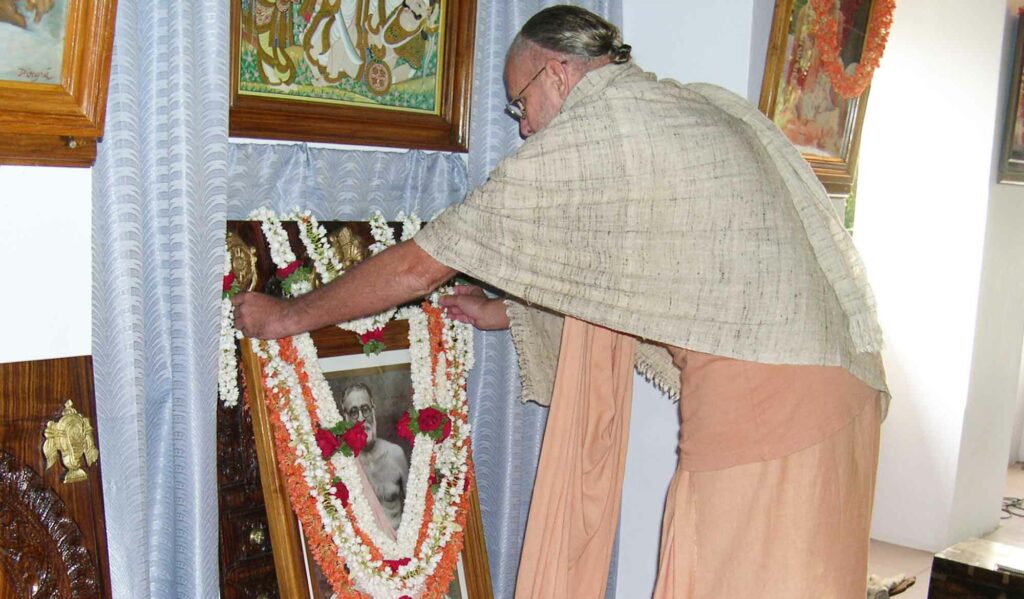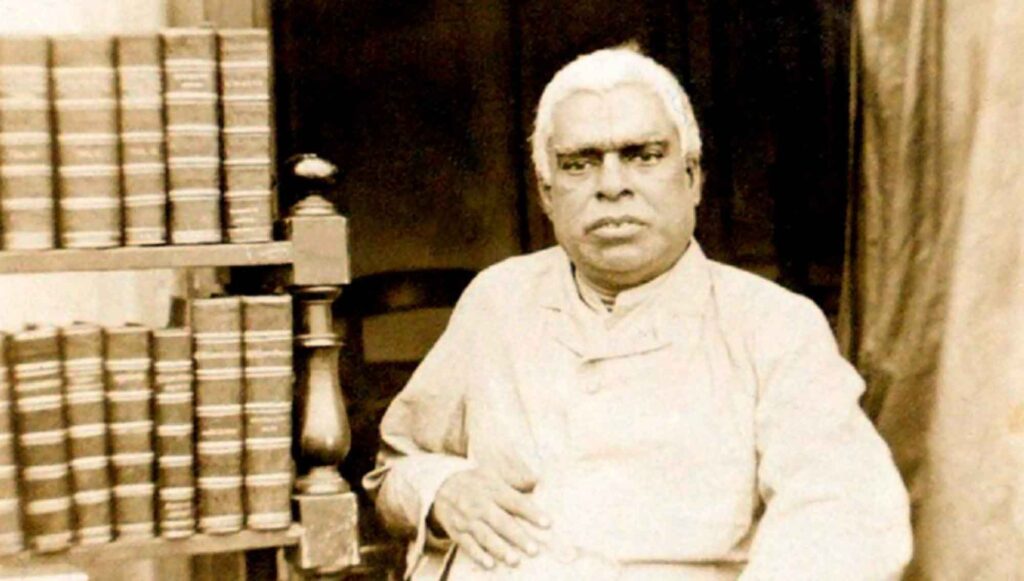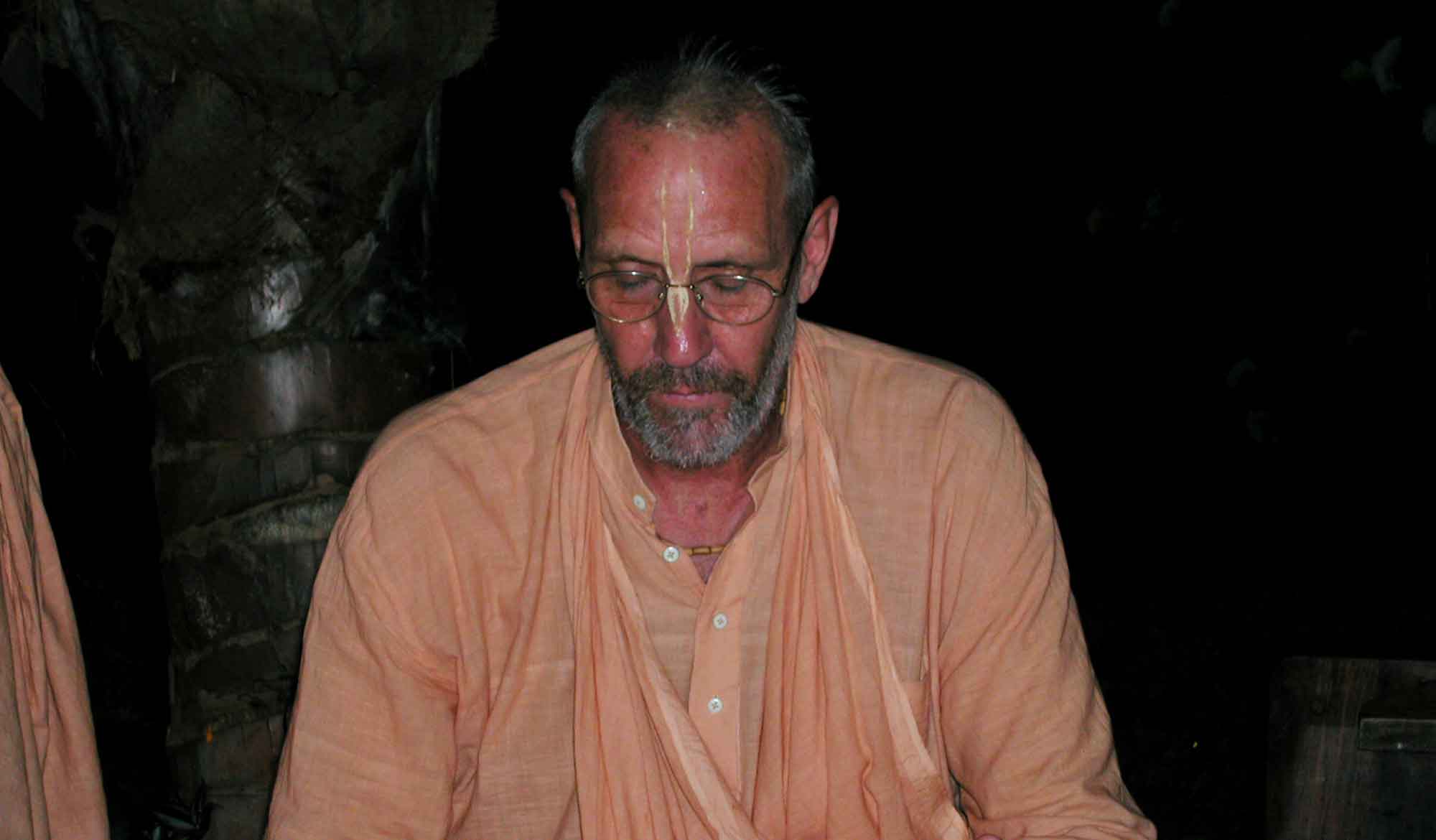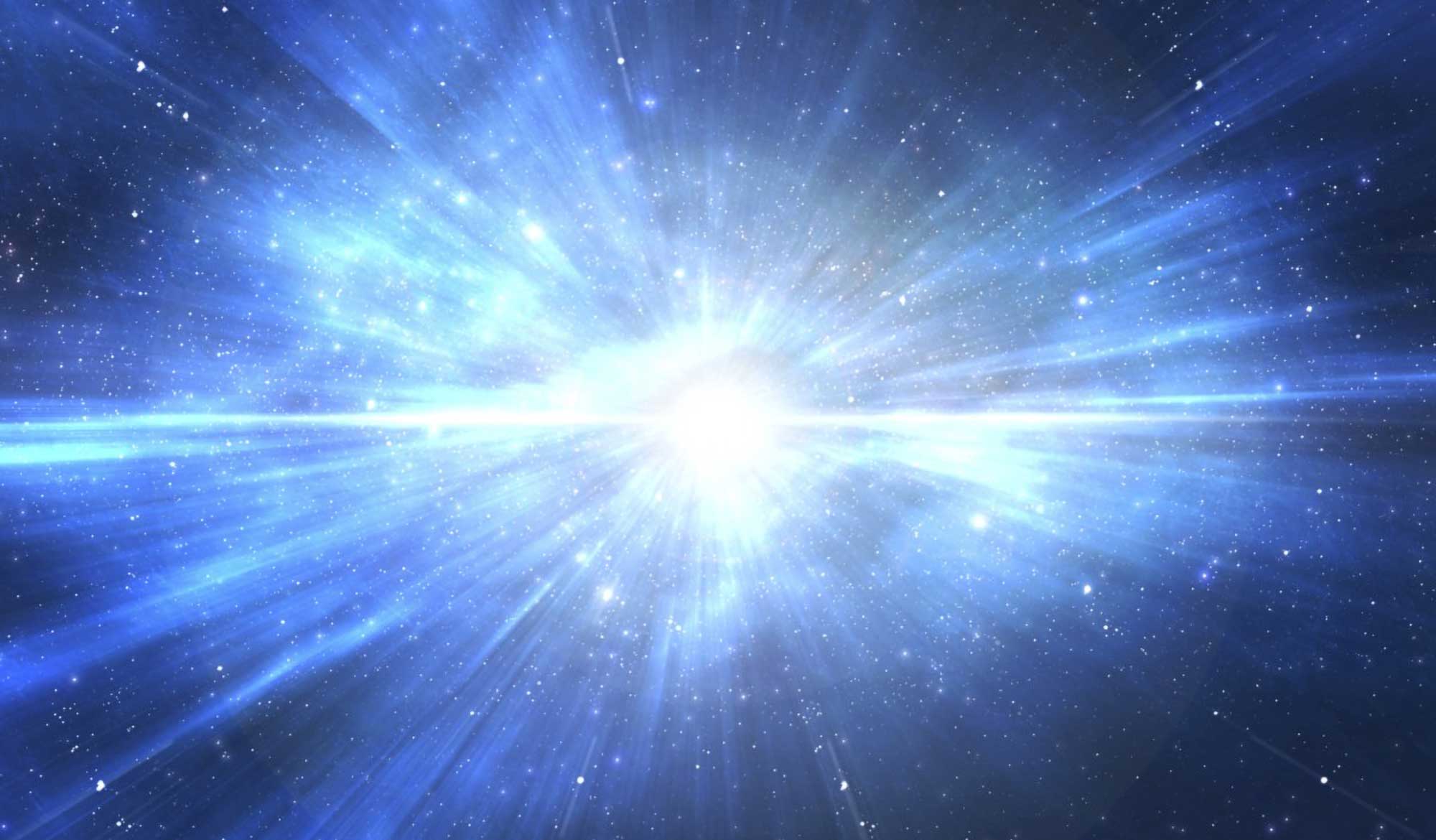by Swami B.G. Narasingha
‘Śāstra-nindā – Rejecting the Śāstra’ was written by Swami Narasingha in 1996. This short article is in response to a statement made by a sannyāsī against the śāstra. Narasingha Maharaja then explains the severity of śāstra-nindā as a nāma-aparādha.
“I don’t care what the śāstra says. Prabhupāda has given us the siddhānta!” (Spoken by a leading sannyāsī, Disappearance observances of Śrīpāda Gaura-Govinda Mahārāja, Bhāgavatam class, Bhuvaneswara, India, 1996.)
Commentary
In the above statement by His Holiness we find two particular elements which are extremely unfavourable for the natural development of Kṛṣṇa consciousness and the final attainment of prema–bhakti or love of God: nāma-aparādha and atheism.
The fourth offence, nāma-aparādha, to the holy name of Kṛṣṇa is to blaspheme, vilify, or reject the Vedic literature or literature written in pursuance of the Vedic version, śruti-śāstra-nindā. To say that one does not care for the śāstra is to commit the fourth offence against the holy name. If a devotee makes this offence, especially on a re-occurring basis, it should be understood that such a devotee does not know the meaning or the value of the śāstra despite his being initiated by a most highly qualified spiritual master.
If a devotee does not understand the meaning of the śāstras then he should surrender to the lotus feet of the spiritual master and receive his expert guidance. If the spiritual master is not available to guide the disciple, then the disciple should surrender to the lotus feet of a genuine sādhu who is fully conversant with the purport of the śāstra and receive his expert guidance.
These three things are always there to guide the fallen conditioned souls: guru, sādhu, and śāstra.
To a neophyte disciple there may appear to be contradictions between guru, sādhu, and śāstra but such contradictions are only apparent not real. Seeing an apparent contradiction between guru, sādhu, and śāstra a neophyte devotee sometimes rejects either the guru, the sādhu, or the śāstra. This is certainly an unfortunate occurrence and this sometimes causes the devotee to fall down.
The śāstra and the Bhāgavata in particular is full of descriptions of the Supreme Personality of Godhead and His pure devotees. The guru and the sādhu, who are also known as the devotee bhagavata, lead their lives strictly in accordance with the book Bhāgavata. Thus it is said that the book Bhāgavata or the śāstra, and the devotee bhagavata are identical.
Both the śāstra and the guru or sādhu are direct representatives of the Supreme Personality of Godhead, Kṛṣṇa. Therefore, a devotee should give his highest respect to guru, sādhu, and śāstra. Not only respect but one must have complete faith in guru and sādhu if one at all wants to know the meaning of the śāstra. Therefore, if even after years of practicing bhakti–yoga a disciple cannot understand the śāstra it should be understood that he does not have complete faith in the guru.
yasya deve parā bhaktir yathā-deve tathā gurau
tasyaite kathitā hy arthāḥ prakāśante mahātmanaḥ
“Only unto those great souls who have implicit faith in both the Lord and the spiritual master are all the imports of Vedic knowledge automatically revealed.”
If someone rejects the śāstra not caring for the direction given therein then that person is automatically rejected by the spiritual master and can be considered a pāṣaṇḍī or an offender. The Buddhists have rejected the śāstra and therefore they have been rejected by the Vaiṣṇava ācāryas as pāṣaṇḍī or atheistic. The common ground for all atheistic persons is that they reject the śāstra.
Atheistic persons reject the śāstra in either of two ways. The first class of atheists rejects the śāstra completely not caring for it at all. Whereas the second class of atheists externally accept the śāstra but they give their own speculative interpretation. This first class of atheists are the Buddhists and the second class of atheists are typically the followers of Śaṅkarācārya. Buddha rejected the śāstra entirely whereas Śaṅkarācārya gave his own imaginary interpretations to the śāstra. Of the two, Śrī Caitanya has said, vedāśraya nāstikya-vāda bauddhake adhika – “Those who have taken shelter of the Vedas, yet preach agnosticism (māyāvādīs) are worse than Buddhists.” A half-truth is worse than no truth at all.
In conclusion, it must be said that although the orator of the statement under consideration is indeed a practicing Vaiṣṇava, his statement rejecting the śāstra should itself be rejected because it does not align with the proper Gauḍīya Vaiṣṇava siddhānta.
More Articles by Swami B.G. Narasingha
The Sacred River Sindhu/Indus
‘The Sacred River Sindhu/Indus’ was posted by Swami B.G. Narasingha on his blog, narasingha.net, on October 2nd, 2011. In this short article, Narasingha Maharaja explains the significance of the River Sindhu and his pilgrimage to it. This article was later expanded into a bigger article called ‘Sindhu River – How India Got Her Name.’
Instructing the Guru
This article “Instructing the Guru” was written in April 2018 by Śrīla Narasingha Mahārāja who answers a question concerning a previous article wherein a Vaiṣṇavī writes a letter to her dīkṣā-guru and explains to him about the importance of śikṣā. In response, a question was raised by a devotee about the etiquette of a disciple instructing her guru.
The Atomic Ray – From Uniform Consciousness to Individual Conscious Units
In “The Atomic Ray - From Uniform Consciousness to Individual Conscious Units” written in 1996 Śrīla Narasiṅgha Mahārāja discusses the constitutional position of the jīva, according to Bhaktivinoda Ṭhākura and Śrī Caitanya-caritāmṛta.













